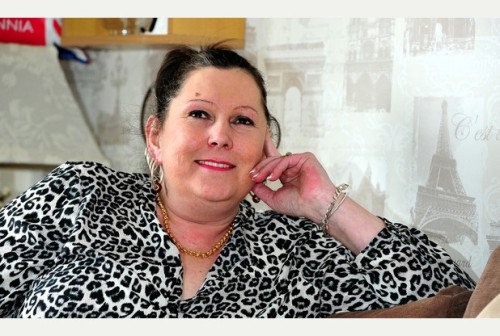
Angela Winfield became HIV-positive in her teens but thanks to medical advances, is facing a normal lifespan, with medication to control the condition.
“EVERY day I wake up and I’m alive and it’s a new day, that’s all I ask for. I would love to go on and live as long as I can.”
It’s an ambition Angela Winfield thought she would never achieve after becoming HIV-positive in her teens. At the time, she was told nothing could be done, and the longest she could expect to live was to just 30.
But as medical advances have continued since the once-deadly condition first became prevalent 30 years ago, she was told two years ago she could now have a normal lifespan.
Angela, 44, became HIV-positive after her first sexual encounter at the age of 15. Her then-boyfriend, who has since died, believed he contracted the condition from a transfusion of tainted blood that he needed because he was a haemophiliac.
Angela later went on to have two children with another man, but then, shockingly, found out at the age of 23 that she had HIV. She faced an agonising wait to see if her daughters had contracted the condition, but they were clear.
Since then, she met her husband, John Winfield, who shares her life as she keeps the condition in check with advanced drugs.
Angela, of Bradbourne Court, Derby, said of the day she was first diagnosed: “I was an absolute mess when I was told. It was horrific.
“I’d been handed a death sentence and there was no way out. I thought my life was over before it had started. I no longer had anything to live for, everything seemed pointless.”
After being diagnosed, Angela’s first thoughts were for the future of her two daughters, now aged 26 and 22. She said: “Finding out they didn’t have it was a huge relief and gave me the fight to go on.”
Angela once had to take 28 tablets a day because of her condition but now it is down to just three. She said: “A lot of my friends can’t believe how long I have lived and I want to keep going. Thinking you won’t live past the age of 30 is a terrible feeling.
“I was told two years ago that it’s no longer a death sentence. It’s now an illness which can be controlled.
“I want to keep going. I would love to be a great-grandma and after saying I didn’t think I would see my grandchildren, that is amazing.
Angela has seen the birth of five grandchildren and married John eight years ago. He cares for Angela, who also suffers from osteoarthritis, a spinal prolapse and side-effects from the medication.
Angela now has a clear message for youngsters who are experimenting with sex and for those who are diagnosed with HIV. She said: “Please be careful. Think about what you’re doing because one mistake can change your life. It only takes one time and then that’s it, your life will change forever.”
John is tested for the disease every few years. So far, results have always been negative and the 49-year-old does not fear them.
John, who works part-time at Silly Sid’s furniture store, in Balaclava Road, said: “Since I have been with Angela, I have gone with the flow. The disease has never bothered me at all. If any of my tests come back positive then that’s life.”
PROGNOSIS HAS IMPROVED WITH TIME:
WITHOUT treatment, the average survival time after infection with HIV is estimated to be nine to 11 years.
Infection with HIV occurs by the transfer of blood, bodily fluids, or breast milk. Within these, HIV is present both as free virus particles and a virus within infected immune cells.
Twenty years ago, anyone diagnosed with HIV could expect to suffer with AIDS within ten years and most patients were expected to die within two years of developing AIDS.
Fortunately, new tests, treatments, and technological advances for HIV have greatly improved this formerly grim prognosis. Anti-HIV drugs can help to slow damage caused by the virus.
Timely treatment is the key to a good prognosis for people who have HIV. Those who remain untreated will experience complications from the virus that will lead, over time, to illness and death, but anti-HIV therapy can help most people stay healthy and experience long lives.
















